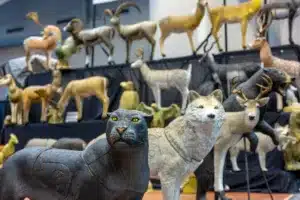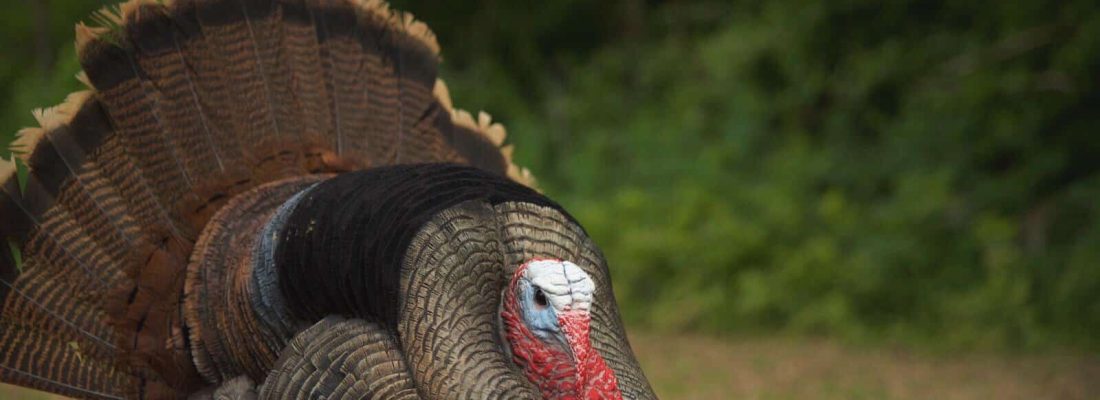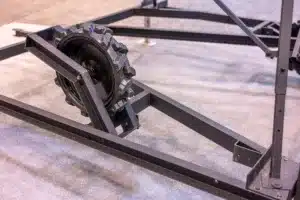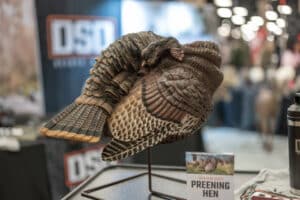No products in the cart.

365 Archery 3D Archery Targets
When folks enter a new industry, or even a new subsection of their industry, they usually dip their toe in by offering one or two


With spring turkey season well underway in many parts of the country, most social media feeds are blowing-up with pictures of big birds, long beards and lengthy spurs. How do these folks manage to get such magnificent birds? While there are no magic recipes for bagging a wary old tom, there are some general rules of thumb that make the process a little bit easier. Aside from simply being where the birds are, one of the biggest items to consider is use and placement of decoys.
Now—from a distance—almost all decoys are going to look somewhat like a turkey. However, to pull those wary birds in those last few, precious yards to get them within range, an ultra-realistic decoy pays for itself many times over. Dave Smith Decoys makes the most realistic decoys money can buy and I can attribute many birds to the surreal, almost too-lifelike decoys they provide.
When you are thinking about your turkey decoy setup, try to keep one thing in mind; visibility. If they can’t see the decoy, that defeats the purpose of using one in the first place. Having visibility will often play into what areas you can effectively hunt. A large, open field with a food source is ideal; provided the grass is not too tall. On the other hand, hunting a 200 acre field will take more than just decoy visibility to draw in birds.
Early in the season there is typically a lot of competition between toms around receptive hens. As a result, a breeding pair such as DSD’s Jake and Submissive Hen can make a deadly combo. This combination can attract both older, mature toms as well as younger, aggressive gobblers and jakes looking for a fight. If you are in an area with mature birds, your best bet may be to swap your jake for a Strutter decoy with a jake tail fan. Territorial gobblers usually will not let a jake set up shop in his back yard. Keep enough space between your Jake/Strutter decoy and your Submissive Hen that a strutting tom can walk between them, with your male decoy facing the blind at about 8-10 yards for a short bow shot. I would not recommend placing them any closer to the blind as this can make for a tougher bow shot. With a gun you could stretch that range slightly, but I still like to keep the decoy within 20 yards.
Later in the season the number of receptive hens dwindles and toms will be willing to cover more distance looking for that lone hen. They probably have been in more than one skirmish with other toms or groups of jakes by this point, so I’ll typically abandon the male decoy and go with one or two hen decoys. My favorite is DSD’s Leading hen decoy. I like to place her about 10-15 yards out from your blind with her facing or quartering towards the front of the blind. The idea behind this is the tom will cut her off trying to get her attention, putting him within 8-10 yards for an easy shot.
Regardless of which phase of the season it is, you can never go wrong with the Feeding and Upright hen combination. I like to place the feeding hen within a couple of yards of the blind in order to ease the tom’s concern about the blind. However, actual location isn’t all that critical as long as she is visible. You can also add a little motion to the decoy by using a pull-string (fishing line) or one of the Motion Madness Decoys DIY assemblies and you’ll be almost guaranteed to draw the bird that has “seen it all” to your setup. Upright hens are a great decoy for just about every situation or setup. Place your upright hen where you want your shot to be and get ready for action!
Keep in mind, there are multiple ways to skin this proverbial cat. There is no fail-safe method to getting up-close-and-personal with these fickle birds. If you find birds aren’t responding to your setup (even if it has worked in the past), switch it up!

When folks enter a new industry, or even a new subsection of their industry, they usually dip their toe in by offering one or two

Highlights of Greylight’s new releases for 2024 – the Daybreak Blind, Transformer Tower, and Nomad trailer.

With one of their coolest decoys to date, the NWTF floor was buzzing with talk of the new DSD Preening Hen decoy. It’s almost TOO
Don’t miss a thing! Subscribe below to keep informed on everything that’s happening with the folks at SELFILMED.com